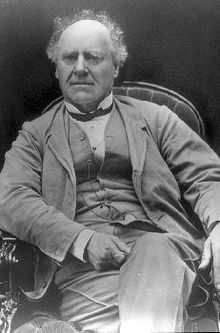Camp Hill Cemetery
 The Camp Hill Cemetery. | |
| Details | |
|---|---|
| Year established | 1844 |
| Location | Halifax, Nova Scotia |
| Country | Canada |
| Coordinates | 44°38′33.9″N 63°35′10.2″W / 44.642750°N 63.586167°W |
| Type | Public |
| Owned by | Halifax Regional Municipality |
In 1844 Camp Hill Cemetery on Robie Street in the heart of Halifax, Nova Scotia, Canada replaced the city's first cemetery known as the Old Burying Ground that had been established almost 100 years earlier in 1749. Originally run by private company, the cemetery is now owned and administered by the Halifax Regional Municipality.
As a cemetery in the provincial capital, Camp Hill became the final resting place for many of Nova Scotia's elite. Officials did allow for the burial of Black Canadians, albeit in a segregated section of the cemetery. In the 1990s it was pointed out that the resting places of African-Canadian veterans of World War I, unlike other white Canadian veterans, were marked by nothing more than flat white stones. This situation has since been rectified by the federal department of Veterans Affairs.
The Commonwealth War Graves Commission maintains the war graves of 10 service personnel of World War I and over 80 of World War II.[1]
There are also 17 graves of Norwegian sailors, soldiers and merchant seamen in Camp Hill Cemetery who died in Nova Scotia during World War II. These men were at sea when Germany invaded Norway in 1940. The King and government of Norway ordered the more than 1,000 ships at sea to go to Allied ports.
Notable interments
-

Enos Collins (1774-1871), privateer, merchant, banker
-
Joseph Howe (1804-1873), journalist, statesman
- James De Mille (1833-1880), novelist, educator
- Abraham Pineo Gesner (1797-1864),inventor of kerosene; a primary founder of the petroleum industry
- Simon Hugh Holmes (1831-1919), lawyer, journalist, politician
- Alexander Keith (1795-1873), brewer, politician
- Jonathan McCully (1809-1877), educator, statesman
- Peter Nordbeck (1789-1861), silversmith and jeweller
- Harry Piers (1870–1940), museum curator, historian
- William James Stairs (1819-1906), merchant, banker, politician
- William Machin Stairs (1789-1865), Bank founder, merchant, statesman
- Robert Stanfield (1914-2003), Premier of Nova Scotia, Federal Opposition Leader; one of Canada's most respected politicians
- William Valentine (1798-1849), painter
- John Taylor Wood (1830-1904), Civil War Confederate Naval Officer, grandson of President Zachary Taylor, nephew of Confederate President Jefferson Davis
- Sir William Young (1799-1887), politician, Premier of Nova Scotia
References
- ↑ CWGC Cemetery Report.
External links
- Cemetery Plot Map, Halifax Regional Municipality
- Photographs of John Taylor Wood's tombstone, Camp Hill Cemetery, Halifax, Nova Scotia
- Photographs of Alexander Keith's monument, Camp Hill Cemetery, Halifax, Nova Scotia
